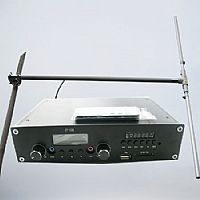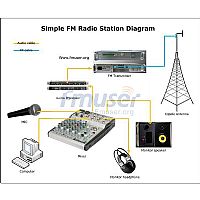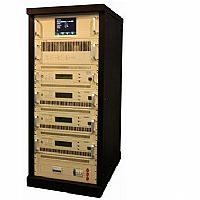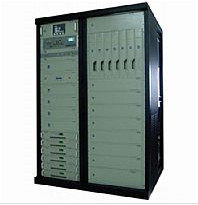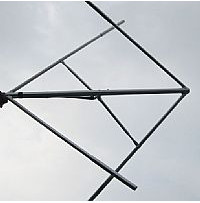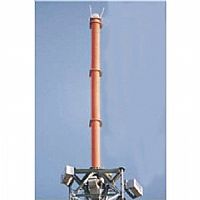What is "primary frequency modulation" and what is "secondary frequency modulation"?
The so-called "primary frequency modulation" generally refers to the generator's governor, while "secondary frequency modulation" refers to the frequency adjustment performed by the generator's frequency regulator when the "primary frequency modulation" fails to meet the requirements. The adjustment of the corresponding adjustment of the prime mover valve opening is achieved through the speed control system, which is called a frequency adjustment.
The adjustment of the valve opening of the prime mover in response to changes in the frequency of the system is achieved through a frequency modulator, which is called the secondary adjustment of the frequency.
One frequency modulation:
When each unit is connected to the grid, affected by external load changes, the frequency of the power grid changes. At this time, the adjustment system of each unit participates in the adjustment function, changing the load carried by each unit, and making it balanced with the external load. At the same time, we also try our best. Reduce the change of the grid frequency, this process is a frequency modulation.
Second frequency modulation:
Primary frequency modulation is a differential adjustment, which cannot maintain the grid frequency unchanged, but can only ease the degree of change of the grid frequency. Therefore, it is necessary to use synchronizers to increase and decelerate the load of some units to restore the grid frequency. This process is called secondary FM.
Only after the second frequency modulation, the grid frequency can accurately maintain a constant value. There are currently two methods for secondary frequency modulation:
1. The overall adjustment orders the factories to adjust the load.
2. The unit adopts AGC mode to realize automatic load dispatching of unit
Simply put, primary frequency regulation means that the steam turbine speed regulation system should adjust the unit load to restore the grid frequency spontaneously according to the changes in the grid frequency. The secondary frequency regulation is artificially adjust the unit load according to the grid frequency.
Primary frequency modulation and secondary frequency modulation
The basic concept of grid frequency modulation
One of the main tasks of power system operation is to control the grid frequency-control the grid frequency within an allowable range around 50Hz. The reason why the grid frequency deviates from the rated value of 50Hz is caused by the breakdown of the balance between the power supply on the energy side (hydropower, thermal power, nuclear power...) and the power used on the load side. The electrical power of the load is constantly changing. Therefore, the essence of the frequency control of the grid is: according to the direction and value of the grid frequency deviating from 50Hz, real-time online through the speed regulation system of the generator set and the automatic power generation control system (AGC) of the grid, Adjust the power supply on the energy side to adapt to changes in the power consumption on the load side to achieve the balance of power generation/utilization of the grid, so that the grid frequency is controlled by the power grid through its own frequency/power characteristics of the generator set speed regulation system, which is usually referred to as primary FM. It is mainly realized by the static characteristic F=f(P) and dynamic characteristic (PID regulation law) of the generator set speed control system;
The grid AGC is based on the macro control of the grid, economic operation and grid exchange power control, and other factors, to the relevant unit speed regulation system to issue the corresponding unit's target (planned) power value, thereby generating power/frequency control within the grid ( LFC), called the second frequency modulation. The rate is restored to an allowable range around 50 Hz.
Generator set speed regulation system primary frequency regulation static characteristics Unit original working condition: point A on static characteristic curve 1 (Pc1): unit target power: Pc1; unit actual power: P1; unit frequency: f1; speed control system adjustment coefficient (speed Rate of change): ep.
There is a power shortage in the power grid, which is converted to the unit under discussion: Power shortage: P3-P1;
Primary frequency regulation Function: grid power shortage will cause the grid frequency to decrease. If no regulation is carried out, the frequency should be reduced to f3 according to static characteristic curve 1 (Pc1).
The static frequency self-adjustment functions together, so that the unit in question has an additional power ΔPf=P2-P1, and the grid frequency is f2 (point B on the static characteristic curve 2 (Pc1)). That is, the unit under discussion has undergone a frequency adjustment together with other units in the power grid, but the grid frequency is f2, and it is impossible to recover to the f1 before the disturbance.
The effect of secondary frequency regulation: If the secondary frequency regulation of the grid modifies the target power of the unit under discussion from Pc1 to Pc2, the static characteristics of the unit speed control system will change from characteristic curve 1 (Pc1) to characteristic curve 2 (Pc2). The final adjustment result is point C on characteristic curve 2 (Pc2): speed adjustment system adjustment coefficient (speed variation rate) ep, unit target power Pc2, unit actual power P3, unit frequency f1; the power shortage of the grid is compensated, and the system The frequency also returns to the value f1 before the disturbance. Obviously, the self-regulation of the grid load frequency (primary frequency modulation) only works during the adjustment process.
To sum up, after the load disturbance of the power grid, the power grid frequency will deviate, and the speed control system of each unit will conduct a frequency adjustment according to the frequency deviation Δf and the (power) adjustment coefficient ep, in a relatively fast time (8 to 15 seconds) Part of the power difference of the system is compensated internally; on the basis of the primary frequency regulation, the automatic power generation control (AGC, secondary frequency regulation) of the grid will correct the target power value Pc of the relevant unit, and pass the P of the speed regulation system
The main performance indicators of primary frequency modulation are as follows:
1. The speed variation rate, namely the permanent slip coefficient bp, ranges from 0 to 10%, and the relative deviation between the actual value and the set value is less than 5%.
2. The nonlinearity error of the permanent slip characteristic curve is less than 5%.
3. The retardation rate of the speed control system, that is, the dead zone of the speed, is less than 0.04%.
0.001±4. The dead zone range for the unit to participate in the primary frequency modulation is 0.500±Hz~Hz. Resolution 0.001Hz
Our other product:

